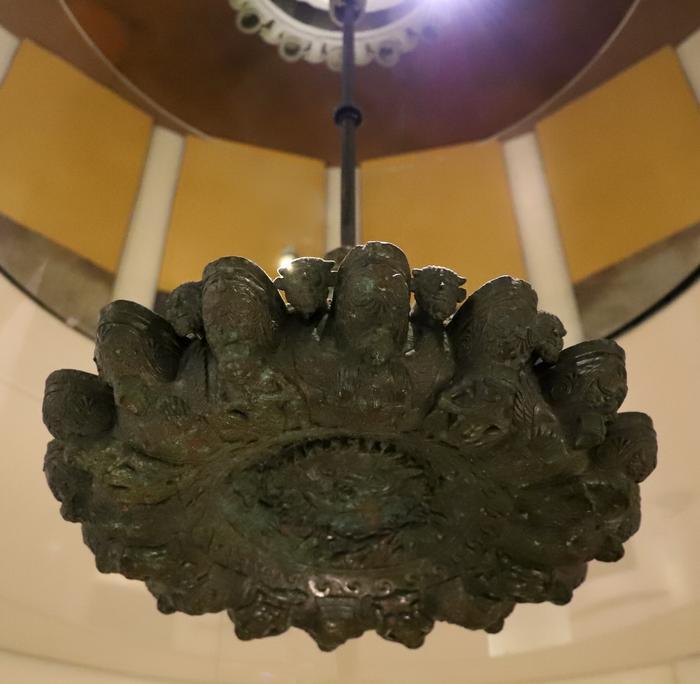A re-evaluation of the ancient bronze lamp concludes that it is a cult object associated with the mystery cult of the god Dionysus
DE GRUYTER
Source - Unraveling the iconography of the Etruscan la | EurekAlert!
 The Etruscan lamp of Cortona CREDIT Museo dell'Accademia Etrusca e della città di Cortona
The Etruscan lamp of Cortona CREDIT Museo dell'Accademia Etrusca e della città di Cortona
A large, highly decorated bronze lamp found in a ditch near the town of Cortona, central Italy, is significantly older than previously estimated and shows the god Dionysus, a new study published in De Gruyter’s Etruscan and Italic Studies argues.
The date of the lamp and the meaning and significance of its decorations have been the subject of controversy since its discovery in 1840. Now, PhD student Ronak Alburz and Associate Professor Gijs Willem Tol of the University of Melbourne, Australia, have used literary sources and other iconographic evidence to provide a comprehensive new analysis of the object.
The Cortona lamp is a bronze hanging oil lamp, roughly in the shape of a chandelier, measuring 60cm across and weighing almost 60kg. It originates from the Etruscan civilization of Archaic Etruria, a region of central Italy corresponding roughly to present-day Tuscany and part of Umbria. The Etruscan civilization thrived from about 900 BCE, but was gradually absorbed into the Roman Republic after about 400 BCE.
The Cortona lamp has defied a comprehensive and satisfactory explanation for two main reasons. Firstly, very few similar objects (‘comparanda’) have been discovered in Etruscan or Ancient Greek art, making it difficult to draw insightful comparisons. Secondly, the lamp lacks context, having been found with only an inscribed bronze plaque which originates from much later. This means there is no information about the building in which it was used or how it related to other artifacts. Scholars were therefore restricted to analyzing individual decorative motifs displayed on the lamp.
In their re-evaluation, Alburz and Tol identify new comparanda that indicate the lamp originated in about 480 BCE, significantly earlier than many other estimates.
They also argue that earlier scholars were incorrect in identifying the lamp’s 16 bull-horned figures as the Greek river god Acheloos. By drawing on various literary sources and presenting new iconographic evidence, they show that Dionysus, the Ancient Greek god of wine and pleasure, was also often portrayed with bull features. They thus propose that the lamp depicts the Dionysian thiasus, the ecstatic retinue of Dionysus who are often portrayed as inebriated revelers.
Lead author Alburz said: “The lamp was probably an object associated with the mystery cult of Dionysus. Its decoration represents the Dionysian thiasus, perhaps engaged in a cultic performance in the cosmos of the mysteries in celebration of Dionysus.”
A Re-Evaluation of the Iconography of the Etruscan Bronze Lamp of Cortona - Etruscan and Italic Studies 10.1515/etst-2023-0019